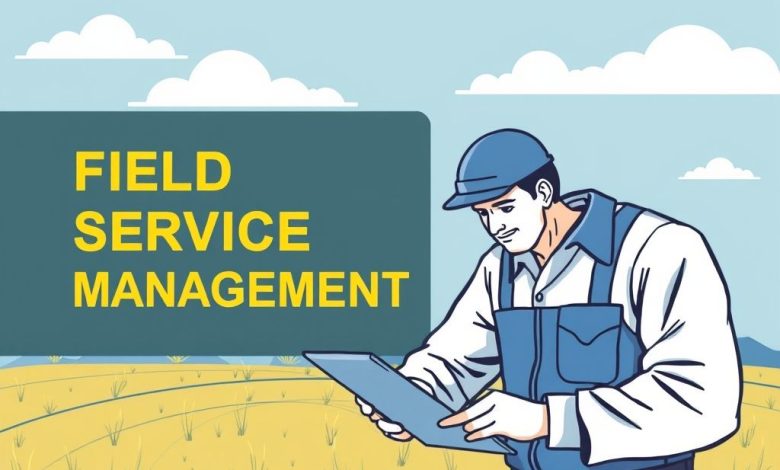Field Service Management for Technical Training Deployment

Introduction
Field Service Management (FSM) is a critical component of modern business operations, particularly in industries where customer support and maintenance services are essential. As technology continues to advance, the need for effective FSM systems has become more pronounced than ever before. One crucial aspect of FSM is the deployment of technical training, which plays a vital role in ensuring that field technicians possess the necessary skills to deliver high-quality services efficiently.
This article will explore the concept of Field Service Management within the context of technical training deployment. We’ll examine the importance of FSM, discuss various strategies for deploying technical training, and highlight best practices for implementing successful FSM systems.
- The Importance of Field Service Management
- Challenges in Field Service Management
- Technical Training Deployment Strategies
- Best Practices for Implementing FSM Systems with Technical Training Deployment
- Invest in Robust FSM Software
- Develop Comprehensive Training Curricula
- Provide Continuous Learning Opportunities
- Foster a Culture of Knowledge Sharing
- Leverage Technology for Training
- Implement Performance Tracking and Evaluation
- Conclusion
The Importance of Field Service Management
Field Service Management encompasses all aspects of managing and coordinating field-based workforces. It involves scheduling appointments, dispatching technicians, tracking inventory, and managing customer relationships. In today’s fast-paced business environment, FSM has become increasingly sophisticated, leveraging advanced technologies such as artificial intelligence, machine learning, and the Internet of Things (IoT).
Effective FSM not only improves operational efficiency but also enhances customer satisfaction. By streamlining processes and reducing response times, businesses can provide better service while minimizing costs. This is particularly crucial in industries such as HVAC, electrical, plumbing, and telecommunications, where timely service delivery is paramount.
Challenges in Field Service Management
Despite its importance, FSM faces several challenges that can hinder its effectiveness:
- Scheduling conflicts: Coordinating schedules for multiple technicians across various locations can be complex, especially during peak seasons.
- Real-time communication: Ensuring seamless communication between dispatchers, technicians, and customers remains a challenge in many FSM systems.
- Inventory management: Accurately tracking and managing inventory levels, particularly for parts and equipment, can be problematic without robust systems in place.
- Skill gaps: Ensuring that technicians possess the necessary skills to handle complex tasks can be challenging, especially in rapidly evolving technological landscapes.
Technical Training Deployment Strategies
To address these challenges and ensure the success of FSM systems, deploying effective technical training is crucial. Here are some strategies for implementing successful technical training deployment:
On-the-Job Training (OJT)
On-the-job training remains one of the most effective methods for imparting practical skills to new technicians. This approach allows trainees to learn by doing while being closely monitored by experienced professionals.
Key benefits of OJT include:
- Immediate application of learned skills
- Personalized feedback from experienced trainers
- Adaptability to specific job requirements
However, OJT also has its limitations:
- Can be time-consuming and resource-intensive
- May not cover all aspects of a job due to limited exposure
Classroom-Based Training
Classroom-based training provides a structured environment where technicians can learn theoretical concepts and gain hands-on experience with simulated equipment or software.
Advantages of classroom-based training include:
- Standardization of knowledge across all trainees
- Ability to cover complex topics in depth
- Cost-effective for large groups
Limitations may include:
- Potential mismatch between classroom learning and real-world scenarios
- Time away from work for trainees
E-Learning Platforms
E-learning platforms have revolutionized the way technical training is delivered. These online resources offer flexibility and accessibility, allowing technicians to learn at their own pace and on their own schedule.
Benefits of e-learning include:
- Reduced training costs
- Increased accessibility for remote workers
- Self-paced learning for better retention
Challenges of e-learning may include:
- Ensuring engagement among learners
- Maintaining consistency in quality of content
- Addressing technical issues related to hardware and internet connectivity
Blended Learning Approach
The blended learning approach combines multiple training methods to provide a comprehensive learning experience. This strategy leverages the strengths of different training modalities to create a more holistic and effective learning environment.
Advantages of blended learning include:
- Personalized learning experience
- Flexibility in training delivery
- Cost-effectiveness
Potential drawbacks may include:
- Increased complexity in managing multiple training methods
- Potential for confusion among trainees due to varied teaching styles
Best Practices for Implementing FSM Systems with Technical Training Deployment
To ensure the success of Field Service Management systems with effective technical training deployment, consider the following best practices:
Invest in Robust FSM Software
Implementing a comprehensive FSM software solution is crucial for efficient management of field operations. Look for software that offers features such as scheduling optimization, real-time tracking, and automated workflows.
Key considerations when selecting FSM software include:
- Scalability to accommodate growth
- Integration capabilities with other business systems
- User-friendly interface for both dispatchers and technicians
Develop Comprehensive Training Curricula
Create detailed training curricula that cover all aspects of the job, including both technical skills and soft skills. Ensure that the curriculum is regularly updated to reflect changes in technology and industry standards.
Best practices for curriculum development include:
- Aligning training with business objectives
- Incorporating both theoretical and practical components
- Including regular assessments and evaluations
Provide Continuous Learning Opportunities
In today’s fast-paced technological landscape, continuous learning is essential for maintaining competitiveness. Implement ongoing training programs that keep technicians up-to-date with the latest tools, techniques, and industry developments.
Strategies for continuous learning include:
- Regular workshops and seminars
- Online webinars and tutorials
- Mentorship programs pairing experienced technicians with newcomers
Foster a Culture of Knowledge Sharing
Encourage a culture of knowledge sharing within your organization. This can be achieved through peer-to-peer mentoring, cross-functional training sessions, and recognition programs for outstanding performers.
Benefits of fostering a knowledge-sharing culture include:
- Improved efficiency through collective expertise
- Enhanced innovation and problem-solving capabilities
- Reduced turnover rates as employees feel valued and supported
Leverage Technology for Training
Leverage various technologies to enhance the effectiveness of technical training. Examples include virtual reality simulations, augmented reality overlays, and interactive 3D models.
Advantages of technology-enhanced training include:
- Immersive learning experiences
- Reduced risk of damage to expensive equipment during training
- Cost-effective alternative to traditional training methods
Implement Performance Tracking and Evaluation
Implement robust performance tracking and evaluation systems to ensure that technicians are meeting expected standards. Regular assessments help identify areas for improvement and provide valuable feedback for ongoing development.
Key components of effective performance tracking include:
- Clear, measurable objectives
- Regular check-ins and progress reviews
- Constructive feedback mechanisms
Conclusion
Field Service Management plays a crucial role in maintaining competitive advantage in today’s service-oriented economy. By deploying effective technical training strategies, businesses can ensure that their field technicians possess the necessary skills to deliver high-quality services efficiently.
As technology continues to advance, the importance of FSM and technical training deployment will only grow. Organizations that invest in comprehensive FSM systems and prioritize continuous learning will be better positioned to thrive in an increasingly complex business environment.
By implementing the strategies and best practices outlined in this article, field service managers can create robust FSM systems that drive operational efficiency, enhance customer satisfaction, and foster long-term success in their organizations.




